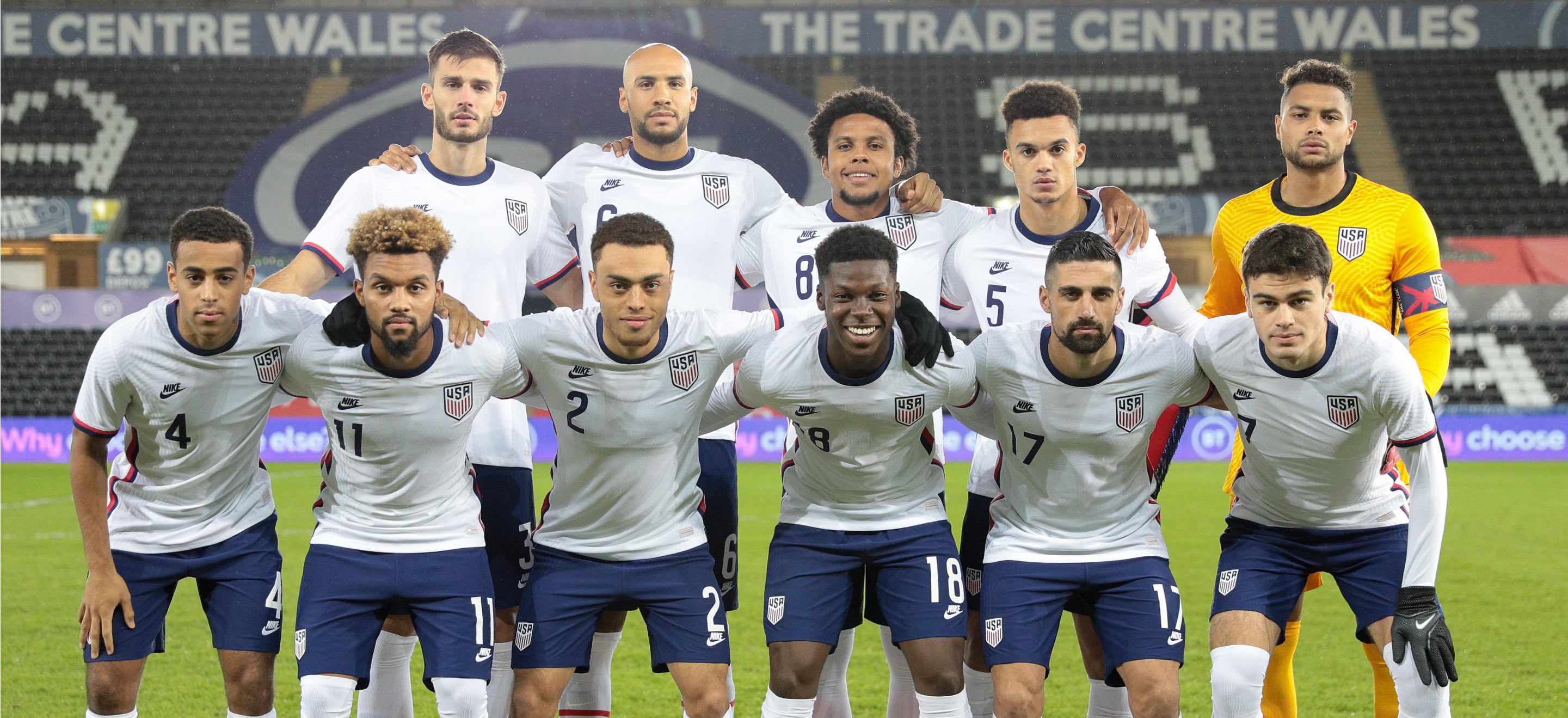
For decades, any analysis of U.S. national soccer has had to be split into two almost irreconcilable discussions.
There is U.S. Women’s National Soccer Team (USWNT), which has won four World Cups, four Olympic gold medals, and eight CONCACAF (the governing body of soccer in North and Central America and the Caribbean) Gold Cups in the last 30 years. Since its creation in 1991, no men’s or women’s national soccer team has been so dominant.
Fans of the U.S. Men’s National Soccer Team (USMNT) have witnessed global USWNT generational players like Mia Hamm, Carli Lloyd, Abby Wambach, Megan Rapinoe, and Alex Morgan perform at their peak on the biggest stages. These teams have produced some legendary moments, like Wambach’s towering last-second header in the 2011 World Cup and Lloyd’s 50-yard strike to round off a 15 minute hat-trick in the 2015 World Cup final. Brandi Chastain even produced one of the most iconic and recognizable celebrations in all of sports in 1999.
The USMNT, however, has won six Gold Cups and…finished third once at the World Cup…in 1930. Icons from the team include Landon Donovan, Tim Howard, Claudio Reyna, and Clint Dempsey. All good players, but not especially close to world class. The best moment in recent memory was Donovan’s late goal against Algeria in the 2010 World Cup. It was a wonderful scene, but the memory is blunted by the USMNT’s prompt dismissal in the round of 16 at the hands of Ghana.
None of this is to disparage the USMNT (however, though not the central focus here, the success disparity also makes any argument in favor of continued gender pay disparity look absurd). It’s just that the talent simply hasn’t been there.
But now the whispers about the USMNT becoming better are turning into shouts, the cautious optimism shifting towards confidence: The new generation of American men breaking onto the scene are different. They have real talent. They have the chance to change how U.S. soccer is perceived; likely not approaching the accomplishments of the USWNT, but maybe one day actually competing with Europe and South America’s best.
This new golden generation features a handful of American players who have already proven they can play at the highest level of European football at the ages of 18–22. The most established, Christian Pulisic, has struggled with injuries but was Chelsea’s best player for the second half of last season. Weston McKennie marauds through the midfield at Juventus and combines well with Cristiano Ronaldo. Sergiño Dest has rare technical ability for a defender and is actually capable of playing on Lionel Messi’s wavelength at Barcelona (or at least as capable as could reasonably be expected).
Gio Reyna is a regular at Dortmund and Yunus Musah is a key versatile player for Valencia. Both are only 18. Bayern Munich have high hopes for Chris Richards and Zach Steffen is a high-level back-up to one of the best goalies in the world in Ederson at Manchester City.
Of course, not all promising young players live up to expectations, but a young core is developing.
Whether or not they really take off, the prestige of these guys is something new in American men’s soccer. Over the years, the USMNT has been led by a motley crew of loveable characters like (guy with horrific dreadlocks) Kyle Beckerman, (secretly an old man) DaMarcus Beasley, and (I had his poster on my wall) Jozy Altidore. And who didn’t, for a brief glorious moment, believe Julian Green would be a star? This is really the end of an era.
What’s changed? There’s a degree of luck, to be sure, but also a shift in approach. The USMNT has begun more actively and successfully recruiting dual-citizens or other players whose family backgrounds and upbringing make them eligible to play for multiple countries.
After just one game with a given national team, players are not eligible to play for others, so competition can be intense to bring young talents into the fold. Young players often wrestle with the choice, too. This dynamic is particularly common for first- or second-generation immigrants, or the children of parents from two (or more) different national backgrounds, who might feel compelled to represent more than one country.
Sergiño Dest is part Surinamese-American and chose to represent the United States despite spending his entire childhood in the Netherlands. Gio Reyna’s father played for the USMNT, but his mixed family background and upbringing meant he could have played for soccer giants like Portugal, Argentina, or England. Yunus Musah was born in America to two Ghanaian parents and split his childhood between Italy and England.
At the moment, the USMNT project seems to offer the right mix of talent and opportunity. There is enough talent to convince potential players that the team could compete in major tournaments, but the group also isn’t so strong that a young player couldn’t get opportunities. Each player, too, clearly feels some kind of emotional connection to the States.
The result is a team that looks a lot more like the country and better represents the status of men’s soccer in America. While soccer itself is imported, the United States is an international home for women’s soccer. The USWNT sources some of the best talent in the world from polished pipelines and is organizationally superb.
The men are still trying to find an identity, taking on bits and pieces of soccer culture from around the world. Ideally, the varied national backgrounds of star players manifests on the field as stylistic diversity and originality. After being tedious and slow for years, the USMNT now shows some glimmers of exciting soccer.
The 2026 Men’s World Cup in North America, coming at the perfect time as this generation theoretically reaches its peak, could be a transformational tournament for the USMNT. Then again, it’s the hope that kills you. Just ask Freddy Adu.
Will Slater can be reached at wslater@wesleyan.edu.



Leave a Reply